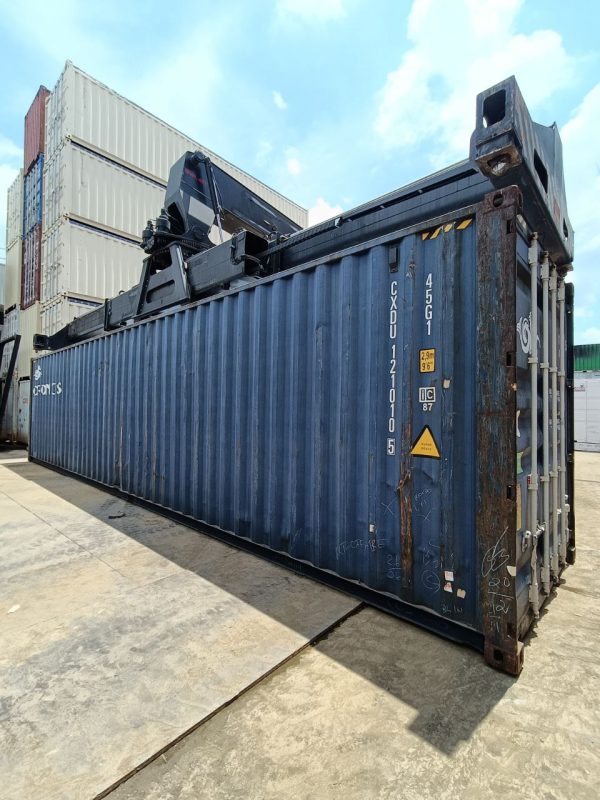The Role of Shipping Containers in Global Trade: Past, Present, and Future

Introduction
Shipping containers have revolutionized global trade, enabling the efficient and secure transport of goods across vast distances. Their impact on international commerce cannot be overstated, as these unassuming steel boxes have fundamentally reshaped supply chains, economies, and even global geopolitics. This article explores the role of shipping containers in global trade, tracing their history from humble beginnings to their current dominance and examining what the future might hold.
The Past: The Birth of the Container Era
Before the advent of shipping containers, global trade was a complex and inefficient process. Goods were manually loaded and unloaded onto ships in a process known as “break-bulk” shipping. This method was labor-intensive, time-consuming, and prone to theft and damage. Each item had to be handled individually, resulting in significant delays and higher costs.
The breakthrough came in the 1950s when Malcolm McLean, an American trucking entrepreneur, pioneered the concept of containerization. McLean’s innovation was to standardize the size of containers, allowing them to be easily transferred between ships, trucks, and trains without the need to unload the cargo. The first container ship, the Ideal X, sailed from Newark to Houston in 1956, marking the beginning of a new era in global trade.
Containerization quickly gained traction, and by the 1970s, it had become the dominant method of shipping goods internationally. The introduction of standardized containers drastically reduced shipping times and costs, making it feasible to trade goods across long distances. This innovation also facilitated the rise of global supply chains, allowing companies to source raw materials and manufacture products in different parts of the world.
The Present: Shipping Containers as the Backbone of Global Trade
Today, shipping containers are the backbone of global trade. Over 90% of the world’s goods are transported in containers, which come in standard sizes, most commonly 20-foot and 40-foot lengths. These containers have made it possible to move vast quantities of goods efficiently and securely, contributing to the growth of international trade and the global economy.
The impact of shipping containers extends beyond mere logistics. They have enabled the development of “just-in-time” manufacturing, where goods are produced and delivered precisely when needed, reducing inventory costs and improving efficiency. This system relies heavily on the reliability and predictability of containerized shipping.
Moreover, the widespread use of containers has also driven the expansion of port infrastructure worldwide. Major ports, such as those in Shanghai, Rotterdam, and Los Angeles, have become global hubs for container traffic, handling millions of TEUs (Twenty-foot Equivalent Units) annually. These ports are equipped with specialized cranes, automated systems, and extensive rail and road connections to manage the constant flow of containers.
In addition to their economic significance, shipping containers have also had a social and environmental impact. The rise of containerization has contributed to the globalization of culture, as goods and products from different parts of the world are more accessible than ever before. However, this global exchange has also raised concerns about the environmental impact of shipping, particularly in terms of carbon emissions and ocean pollution.
The Future: What Lies Ahead for Shipping Containers?
As we look to the future, the role of shipping containers in global trade is likely to evolve in response to emerging challenges and opportunities. One key area of development is sustainability. The shipping industry is under increasing pressure to reduce its carbon footprint, and this is driving innovation in container design and ship propulsion. For example, there is growing interest in using alternative fuels, such as liquefied natural gas (LNG) and hydrogen, to power container ships. Additionally, advancements in technology may lead to the development of more energy-efficient containers, further reducing the environmental impact of global trade.
Another trend shaping the future of container shipping is digitalization. The adoption of technologies like the Internet of Things (IoT), blockchain, and artificial intelligence (AI) is transforming how containers are tracked, managed, and optimized. These innovations promise to enhance supply chain visibility, reduce inefficiencies, and improve security. For instance, smart containers equipped with sensors can monitor temperature, humidity, and other conditions in real-time, ensuring that goods arrive in optimal condition.
The future of shipping containers may also involve new logistical models. The rise of e-commerce and changing consumer expectations are driving demand for faster and more flexible shipping options. This could lead to the development of smaller, more agile container ships that can navigate shallower ports and reach a wider range of destinations. Additionally, the growing interest in the circular economy may see more containers being repurposed for alternative uses, such as housing or storage, further extending their lifecycle.
Conclusion
Shipping containers have played a pivotal role in shaping global trade over the past six decades. From their origins as a solution to inefficient break-bulk shipping to their current status as the backbone of international commerce, containers have transformed how goods are moved around the world. As we look to the future, the shipping industry will need to adapt to new challenges and opportunities, but the container’s fundamental role in global trade is likely to remain unchanged. The evolution of shipping containers will continue to influence economies, industries, and societies for generations to come.

